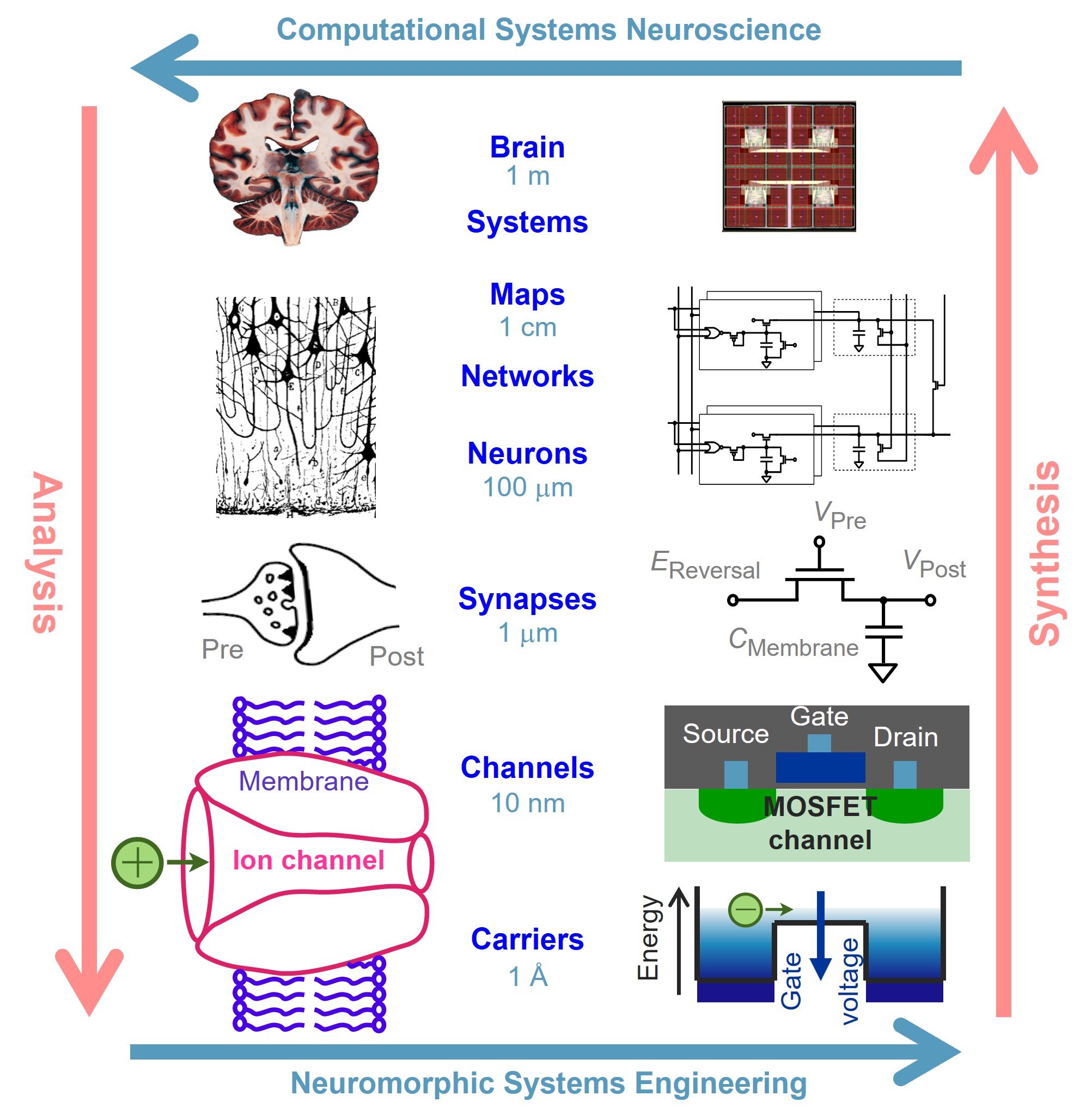What do we do at ENIGMA Lab?
Significant advancements are needed in the development of new class of AI architectures with emerging devices and algorithms that take advantage of distributed networks with sparse activity, taking inspiration from biology, neuroscience and machine learning. At the ENIGMA lab, we build event-based models and architectures that are inspired by the sensory and neural systems of the human body. We strive to create energy-efficient Neuromorphic systems, spanning from devices to applications, by integrating cutting-edge event-based sensors and neural network architectures, along with scalable and efficient algorithms (spike-based or event-based), for seamless operation and real-time decision making, with low latencies and high adaptability to variations. Though the current thrust is on Visual Perception using Dynamic Vision Sensors (DVS) and Compute-In-Memory VLSI hardware, we plan to expand to other sensory modalities including auditory and tactile (touch) sensors. The long term goal is multi-sensory integration and processing leading to Neuromorphic Intelligence.
What is Neuromorphic Engineering?
Neuromorphic engineering pursues the design of electronic systems emulating function and structural organization of biological neural systems in silicon integrated circuits that embody similar physical principles and optimized for extreme energy efficiency. It can transform edge computing with AI, which aims at advancing the engineering and applications of energy-efficient, adaptive and ubiquitous sensing and event-based processing of multimodal data for intelligent decision making, in highly resource-constrained environments including mobile platforms and wearables. Energy efficiency is the critical bottleneck for targeted applications such as fully autonomous drone navigation with lifelong learning, security surveillance, augmented/virtual reality (AR/VR).
Neuromorphic Engineering based on Analysis and Synthesis Feedback Loop

Brain - the Grand Enigma
Understanding and engineering the human brain is the Grand Challenge of the 21st Century! Brain has always been an enigma to humankind, its inner workings the most difficult problem to comprehend. Scientists, philosophers and engineers debate to this day as to how it works.
Some pertinent questions that are being actively researched today:
- How does the brain encode information at different levels - neurons, networks, cortical circuits and full scale?
- How does the brain store and retrieve memory?
- How does the brain learn new information with only a few samples?
- How does the brain model its inner world and perform actions based on predictions?
- Does the brain do backpropagation?
- Are brain rhythms, oscillations just a side effect or a critical component to its function?
- How important is relative timing of events for learning and inference?
Neuromorphic engineering is a promising frontier to address many aspects of this grand challenge, to analyze brain function by synthesizing its properties using various models.

